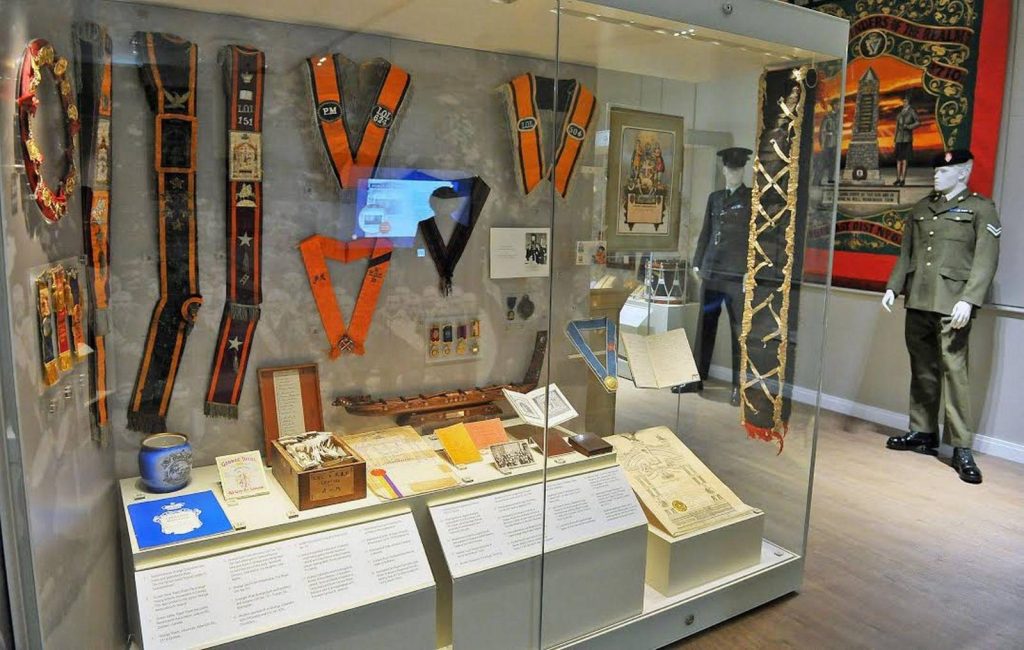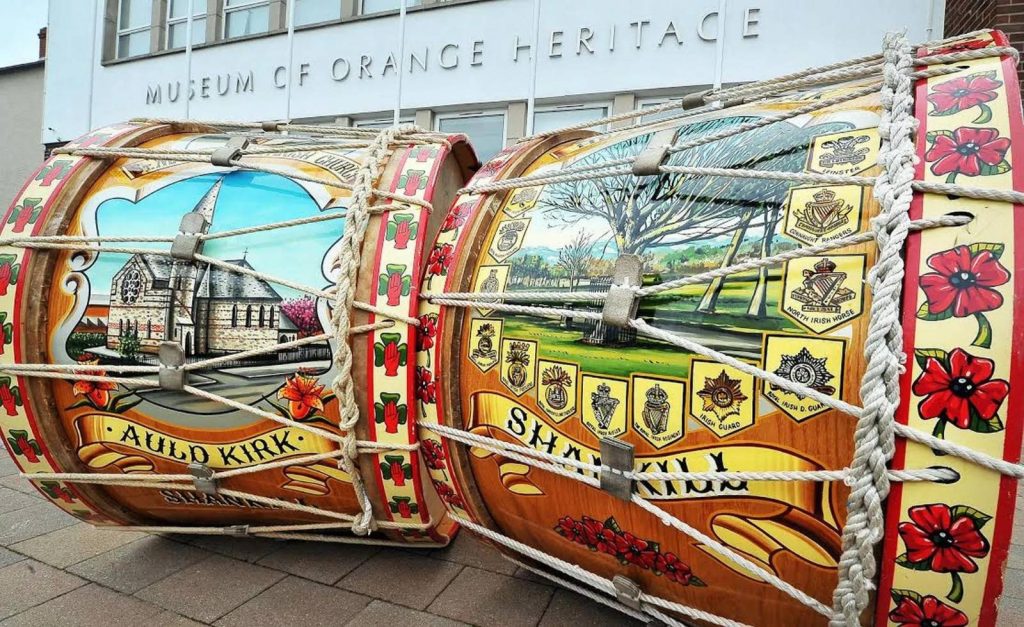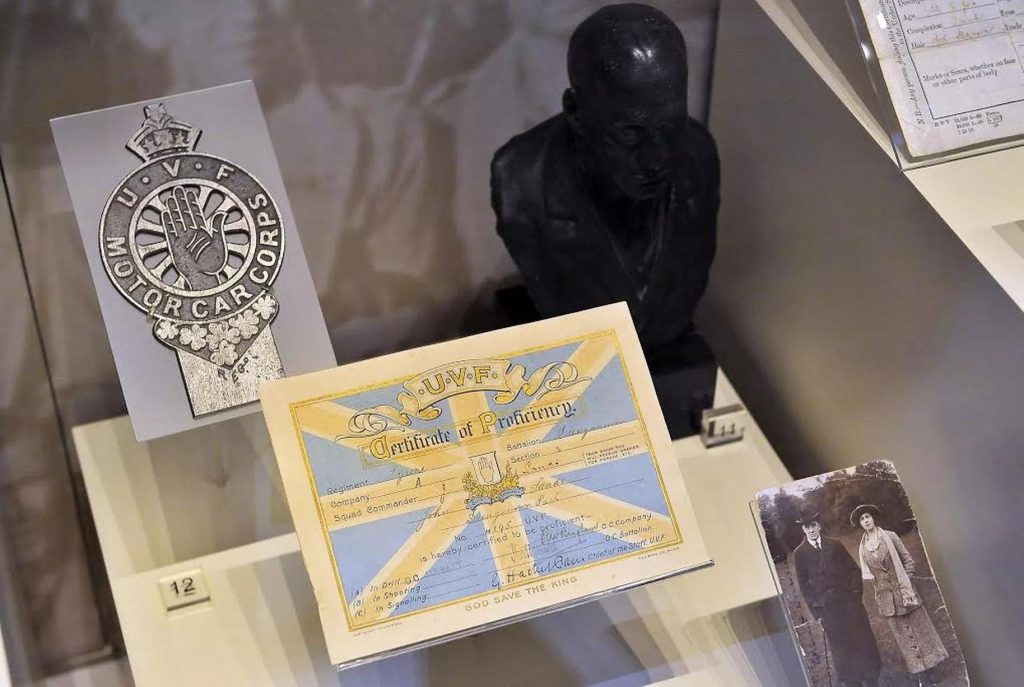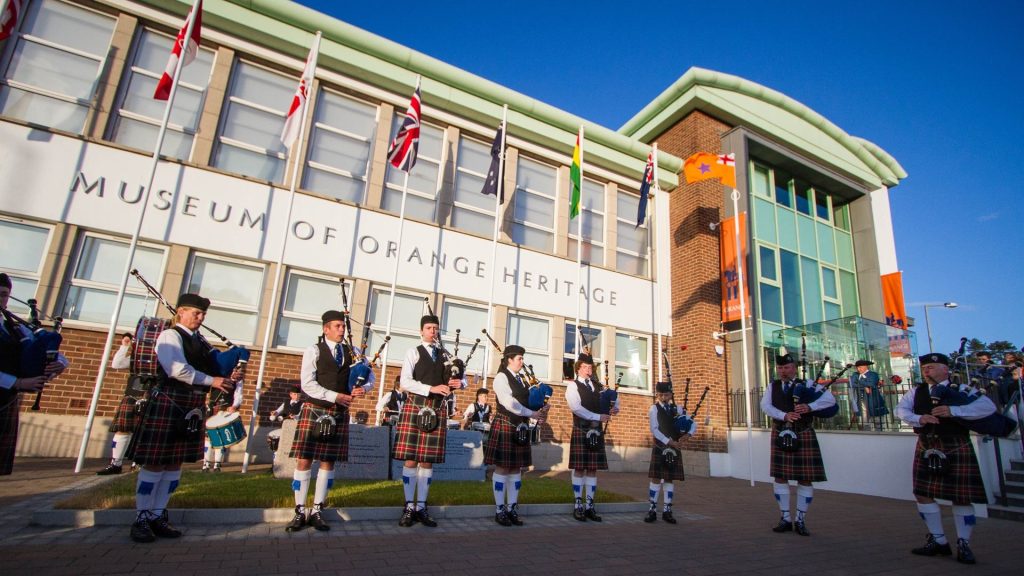A few weeks ago I decided to visit the Museum of Orange Heritage in Schomberg House, East Belfast.
As a Protestant I grew up with Twelfths, had relatives in the various Orders, and have generally been exposed to the “Orange tradition” for much of my life. Indeed, before becoming more politically conscious it was a tradition I was an active participant in.
As such, I wasn’t in any particular need of educating on what Orangeism represents or what the tradition entails. The visit to the museum was instead out of curiosity and for a change of pace (helped by the fact that it is free to visit).
To start with: the café.
It had been very highly spoken of on TripAdvisor and as I hadn’t had breakfast my visit began with a fry.
On the whole I can confirm that in this regard, TripAdvisor is accurate; the café food is very good for what it is, and is more filling than expected. I was surprised at how many people were there, and it’s clear that it has its fair share of regulars. As far as museum cafés go, I must say it is up there.
The layout of the museum is fairly simple. While guided tours are available, it primarily follows a self-guided, largely chronological layout that takes you around one fairly large room. Nothing particularly unconventional or particularly confusing about this.
Text on the wall leading to this room gives context to the political situation in Britain (and Ireland) in the 1680s, with some prior context on the Orange dynasty. The main exhibition opens with the Williamite Wars, particularly focusing on the Siege of Derry of 1689 and the Battle of the Boyne in 1690. From this point the room follows clockwise, with more artefacts and information regarding the 17th century.

The next major focus is on the actual foundation of the Orange Order in 1795 and the developments of the 19th century, including the fluctuating legality of the institution. The Home Rule period features prominently and this is more or less where the historical narrative stops, and instead the 20th century is on display through objects – though a UDR and RUC uniform (with a relevant lodge banner) does shoehorn in later history with very little context.
Beyond this there are a few panels about other fraternal organisations, and a display on the international spread of Orangeism. However, when I made my visit there were a few objects missing which may have tied things together a bit more.
By and large the artefacts themselves were fairly interesting, though there are certainly more artefact-dense museums in smaller spaces. Aside from a few military items – primarily from the Williamite wars – the majority of items present were Orange memorabilia from various lodges over the centuries: lambeg drums, lodge banners, and lodge boxes. There were also a few sashes from prominent members and former unionist politicians on display.
The museum isn’t primarily for the benefit of educating new people on Orangeism, but rather to consolidate the worldview of those already familiar with it.
Ultimately though, the main issue is that there isn’t a whole lot of explanation. While some artefacts (firearms mostly) have quite long provenances about their personal history, and likewise for the drums, there isn’t a great deal of context provided. UVF armbands are presented without any real explanation about why the UVF was created, or indeed how the Orange Order had any sort of connection. Even abbreviations like UVF (or AOH) are left abbreviated; implying that anyone present should already know what they are.
It was details like this that suggested the museum wasn’t aimed for the benefit of educating new people on Orangeism, but rather to consolidate the worldview of those already familiar with it.
The level of detail with which history is covered drops as you go further into the exhibit. A great deal of context is provided on the Williamite Wars, “aided” by a motion-activated video compiling “first hand” accounts from 1690 by actors in costume. However, these are distracting almost to the point of detracting from the information panels.
While there is a recognition throughout the exhibit of how there were conflicts within Orangeism, and that Presbyterians were effected by Penal laws, the United Irishmen do not feature much. Even in the section on the foundation of the Orange Order there is far more emphasis placed on the Defenders, and the agrarian agitation of the period is depicted largely as a religious issue rather than an economic one.
Indeed, United Irishmen like Henry Joy McCracken were active in Armagh during the period of the formation of the Order trying to “unite” Protestant and Catholic farmers. While the exhibit explores the rather well-off backgrounds of the founders of the Orange Order, this is not teased out in any great detail.
Ultimately it’s no surprise that a museum run by the Orange Order is very positive about the Orange Order. However, it’s hard to say that anyone who took everything at face value would be getting an authentic or even reliable account of history.

Despite there being a memorial to Orangemen killed during the Troubles, there is no explanation of what the IRA was (is?) or its origins. There is an information panel noting that the memorial to King William III on the Boyne was blown up in 1923 by the IRA, but no explanation as to why they did it. There is very little engagement with the wider context in which the Order existed, or explanation as to why the Order was as central as it was.
What perhaps makes this more confusing is the fact that the museum’s website does provide reasonably good context for everything seemingly omitted in the museum itself.
While the Orange Order is of course a global organisation, largely spread by Orangemen in the British Army – something acknowledged by the museum – there is more information available on Orangeism’s tangential links to the Philippines through Americans than there is on the last half-century in the north of Ireland, with the exception of a wall giving the Orange Order perspective on the Parades Commission.
It is also in the language used around the former British Empire that the political bias of the lodge is at its clearest, given that it tends to omit anything particularly challenging to the Orange worldview.
It’s for this reason that the implied audience seems to be quite “internal”.
While there is quite a lot of emphasis on the American connection – such as Presbyterian involvement in the American War of Independence – it is hard to tell what kind of American the museum is aimed at. I would be inclined to speculate that the main purpose of the museum is to reinforce the worldview of members of the Lodge and its various fraternal orders. Though the fact that the museum is located in the headquarters of the Grand Orange Lodge of Ireland should suggest that.
Many friends who had previously been to the museum said that they had went mostly for education-related reasons: either it was pertinent to their course in university, or it was part of the cross-community outreach that every schoolchild in the six counties is subject to. Most other reviews specifically mention the tour guiding, so maybe I would have gotten a different perspective (and more to write about) had I engaged in that element.
The more cynical part of me couldn’t help but wonder how much money the place received through “peace money” and funding, and how much of a consideration this was in the museum given that it is certainly tamer on certain issues than some real-life Orangemen would be.

On the whole then, would I as a Lundy traitor and Fenian-lover recommend the Orange Heritage Museum? I probably would, but not because I think it is a particularly innovative museum, nor do I think it would give someone completely unfamiliar with the topic a particularly good insight into Orangeism.
I would be inclined to say that the main person who would benefit from it would be someone who already has some level of understanding of the history of 17th century Ireland or 20th century Ulster unionism, and has an interest in seeing how the Orange Order views itself – or at least how it wants the public to view it.

